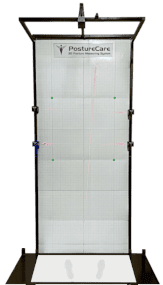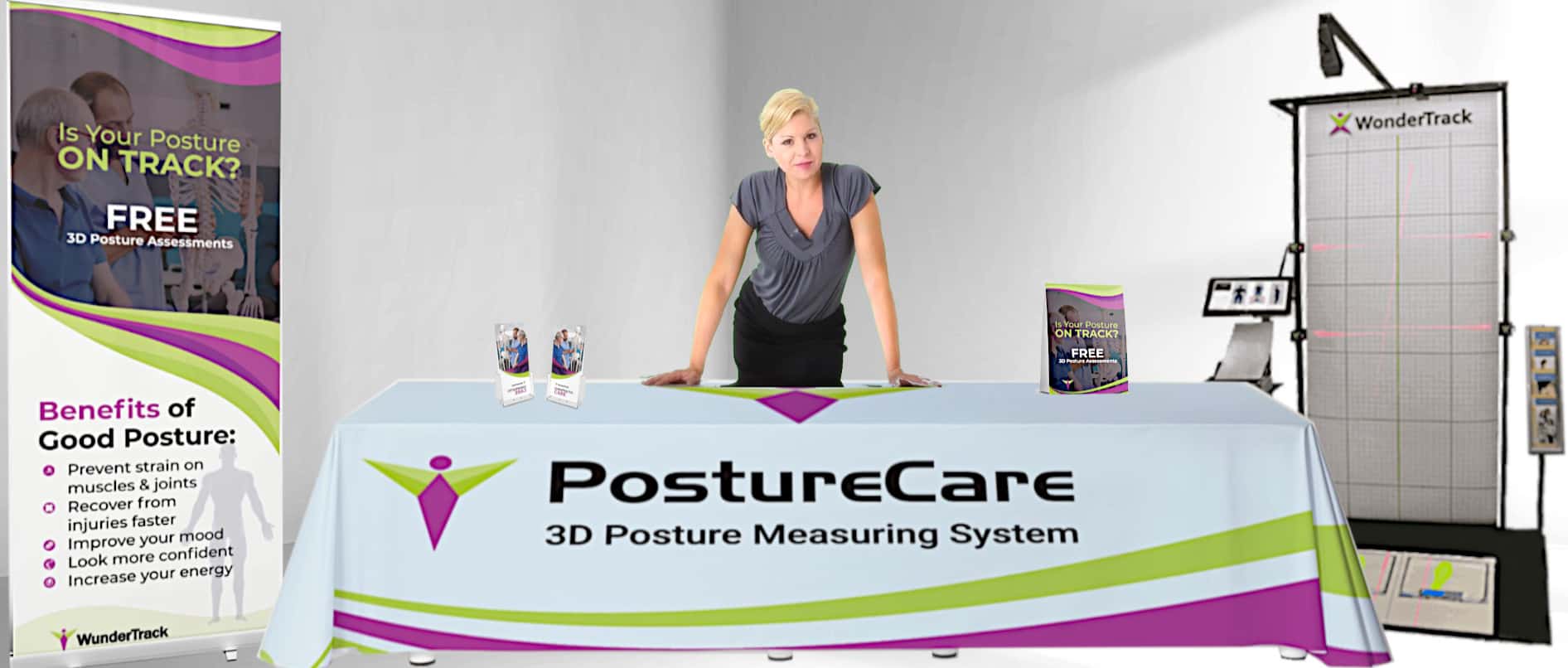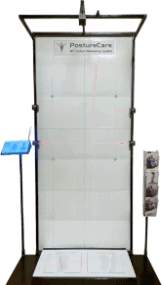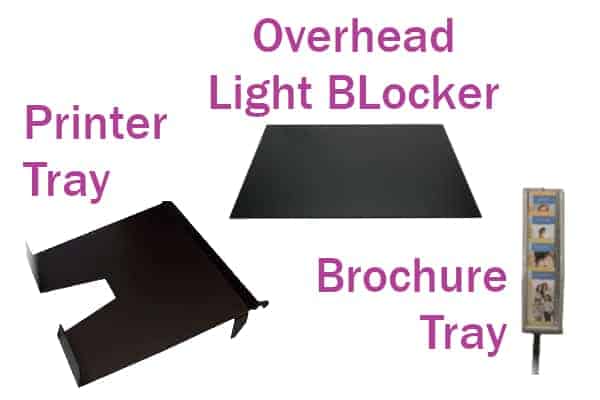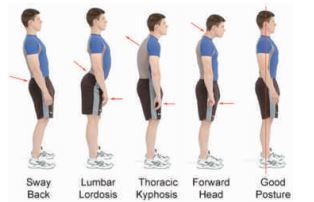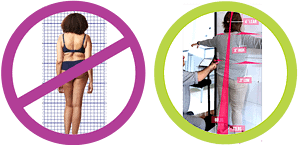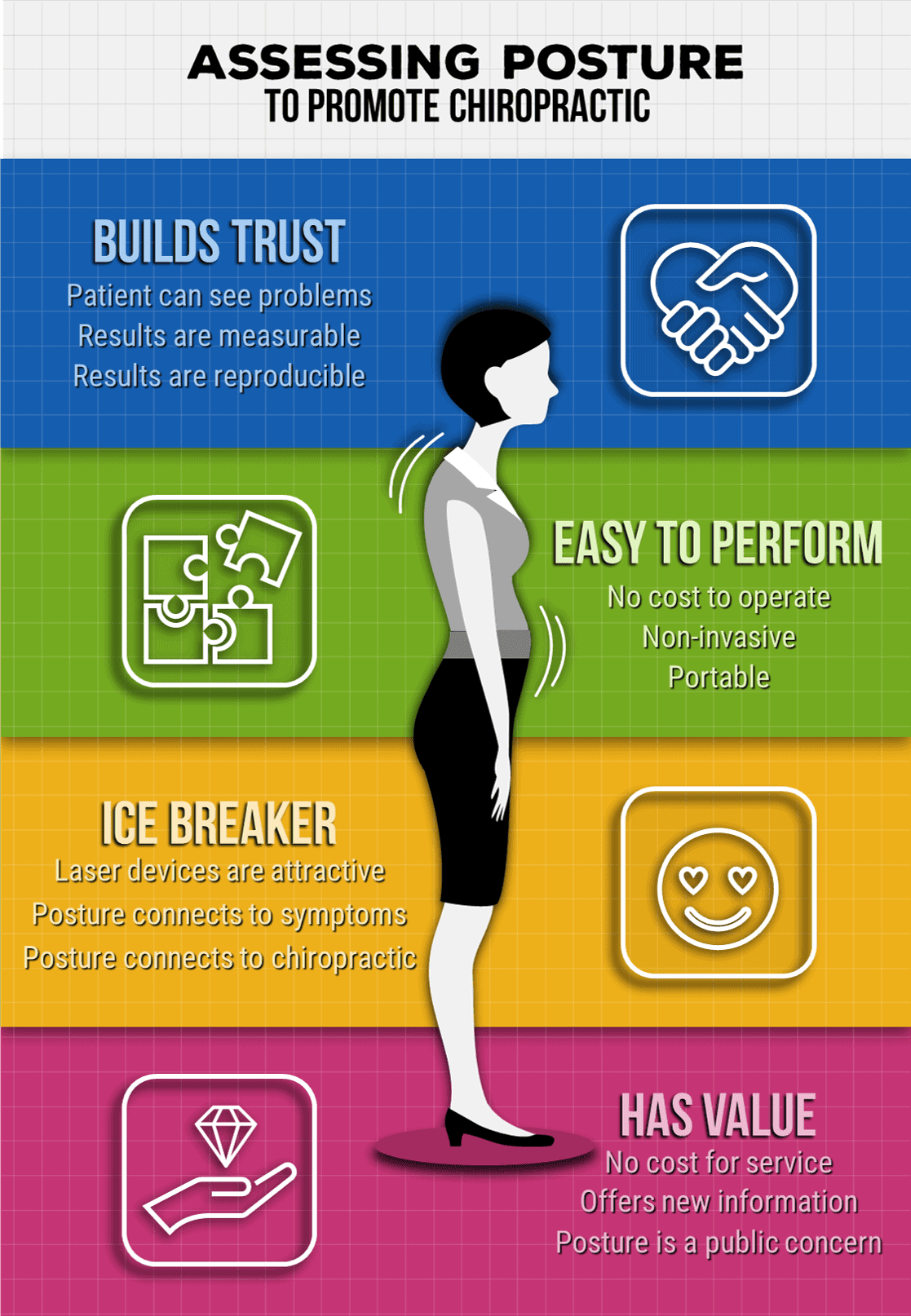
Although chiropractic has been utilized to promote health and wellness since 1895—when its creator, DD Palmer, made the first-ever spinal adjustment—some patients still fail to see the profession as legitimate. This is made worse by online posts with titles such as “The Chiropractic Controversies,” “Are Chiropractors Doctors?” and “Are Chiropractors Legit?”
Combatting these types of beliefs begins with educating prospective patients about the value that chiropractic has to offer. One way to achieve this goal is by offering new patients a posture assessment. How does this evaluation help promote chiropractic?
Builds More Trust with Patients
According to the 2018 Gallup-Palmer College of Chiropractic Annual Report, approximately 53 percent of patients choose chiropractors over physical therapists and medical doctors because they have a higher level of trust in these healthcare professionals. The use of posture assessment devices can help build this trust further, also promoting trust with those who aren’t yet sure what to think about chiropractic care.
The way it works is, when you use a device to assess a patient’s posture, they can visually see the problems that exist. Since there is evidence of the issue, this makes it more difficult for them to think that you’re “making it up” in an effort to get them as a patient.
Offering postural assessments that are also measurable and reproducible reinforce the data collected, adding even more validity to the musculoskeletal issues that exist. This underscores the importance of selecting a high-quality postural assessment device capable of providing accurate information.
Assessments are Easy to Perform
Another reason to use posture assessments to promote chiropractic is that they are incredibly easy to perform. Since it is a non-invasive procedure, there are other advantages as well.
Research published in BMC Medicine reveals that performing noninvasive diagnostics offer benefits such as being less expensive to conduct and providing information in real-time. They also carry fewer risks than invasive diagnostic techniques, such as potentially causing an allergy or being unfit for certain patients, as is the case with tests that require the use of contrast.
By selecting a device that is compact and lightweight, you can also easily move it from one exam room to the next. This portability makes it a good tool to use at community events such as health fairs and expos as well, enabling you to continue to promote chiropractic on an even bigger scale.
Devices Make Great Ice Breakers
It’s not uncommon for new patients to be nervous on their first visit, especially since a previous Gallup-Palmer report found that 47 percent of people who have never treated with a chiropractor have concerns about the dangers of this type of care. Conducting a posture assessment is a great way to help reduce this angst.
Laser-guided posture assessments are attractive, providing the opportunity to get the patients’ minds off of their worries and onto the device itself. It offers a distraction of sorts, alleviating some of the tension by giving their minds the opportunity to relax.
These devices also enable you to connect posture to any symptoms they may be experiencing, thereby opening the door to connecting chiropractic as a solution to these concerns.
For example, some studies have connected posture with the body’s ability to allow intestinal gases to flow healthily through it. So, if a patient reports experiencing symptoms such as bloating and flatulence, you can talk about how improving their posture can help ease these effects. From there, it’s easier to transition into how chiropractic aids in good posture, essentially completing the circle.
The Value of Assessment
Perhaps the most compelling reason to use posture assessments to promote chiropractic is that there is tremendous value in these assessments. Not only to you as a provider, such as being able to find patients’ problem areas at no additional cost once the device has been purchased, but it also means enhancing your ability to obtain critical health information.
An example of this was published in the journal Chiropractic & Osteopathy and involved a 21-year-old female patient experiencing intense upper neck pain, headaches, and dizziness after an auto accident. After assessing her spine, it was revealed that there were several subluxations in the cervical spine, even though previously conducted tests failed to recognize this issue.
Ultimately, posture is a public health concern. As the National Institutes of Health (NIH) indicates, “Years of slouching wears away at your spine to make it more fragile and prone to injury.” This agency goes on to say that poor posture also increases one’s risk of pain, reduced joint flexibility, and even negative mental health effects.
Thus, by conducting a posture assessment and providing advice for how to improve it, you’re helping patients lead higher-quality lives both physically and mentally. You can’t get more valuable than this, making it the best promotion of all.


